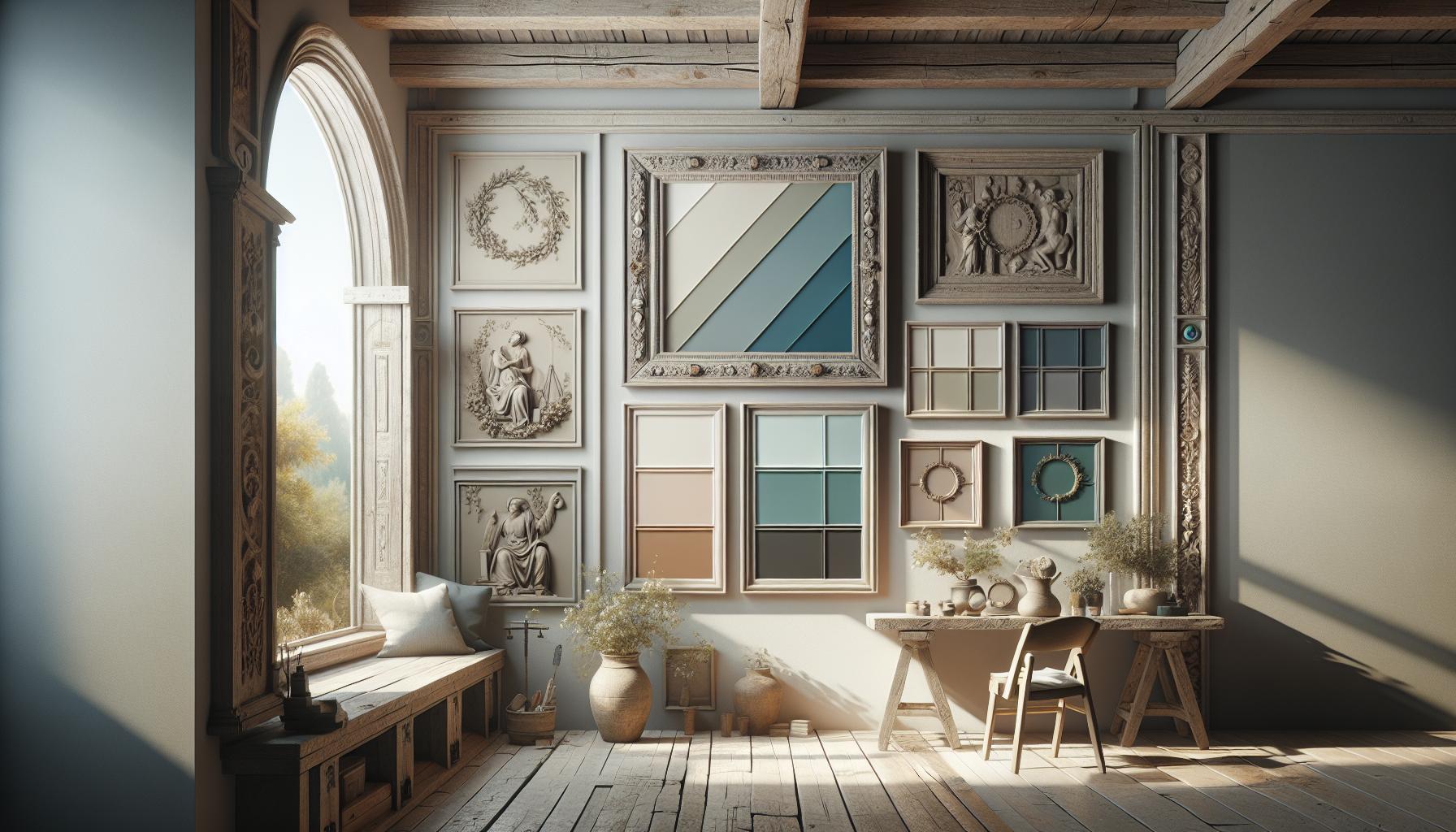Sustainable Framing Options - Eco-Friendly Virtual Frames
Dive into the world of sustainable art with our guide to eco-friendly virtual frames! Discover how artists are minimizing their carbon footprint while redefining artistic presentation. 🌿🖼️ Click to explore the future of art and sustainability!

Exploring Sustainable Framing Options: Embracing Eco-Friendly Virtual Frames
In a world increasingly aware of the impact of human activity on the environment, the realm of art and interior design is evolving to embrace more sustainable practices. Sustainable framing and eco-friendly virtual frames are emerging as a viable solution for environmentally conscious artists and collectors. This blog post delves into these innovative practices, exploring the benefits and technologies behind eco-friendly virtual framing options.
The Traditional Framing Dilemma
Framing art traditionally involves materials that often contribute to deforestation, carbon emissions, and environmental degradation. Historically, framing materials such as wood, glass, and metal boast a sizeable carbon footprint due to the energy-intensive processes required to produce and transport them. In contrast, sustainable framing practices seek to mitigate these impacts, offering alternatives that prioritize environmental stewardship.
Advancements in Virtual Framing Technology
The advancement of technology has undeniably been a force of change across various industries, and art is no exception. Virtual framing enters the scene as a cutting-edge solution that provides the visual appeal of traditional framing without the associated ecological costs. Virtual frames allow artists and collectors to visualize artwork in galleristic settings, effectively showcasing pieces without inputting physical resources. Below, we’ll detail how these eco-conscious solutions are possible.
How Virtual Frames Work
Virtual frames use augmented reality (AR) technology to superimpose a digitally created frame onto a piece of artwork, allowing users to experiment with different framing styles without producing any waste material. By leveraging software applications and AR tools, artists can determine the most fitting look for their work in records amount of times, often with just a smartphone or computer.
- Ease of Customization: Virtual frames offer unparalleled flexibility, enabling users to change frame styles, colors, and sizes instantaneously, trialing combinations that simultaneously meet aesthetic desires and sustainability goals.
- Reduced Carbon Footprint: Unlike physical frames that require shipping and handling, virtual frames exist within a digital platform, eliminating the need for transportation and minimizing associated carbon emissions.
- Cost-Efficiency: Without the overheads of materials and labor, artists can save considerably on framing costs, simultaneously making sustainable choices more accessible financially.
The Benefits of Eco-Friendly Virtual Framing for Artists
Eco-friendly virtual framing extends beyond individual impact, showcasing broader advantages for communities and the planet as a whole.
- Environmental Preservation: By reducing dependence on traditional framing materials, virtual options contribute to the conservation of forests and a decrease in demand for mining and heavy industries, positively impacting global ecosystems.
- Innovation in Artistic Presentation: Artists can experiment with more versatile and creative presentations of their work, often unburdened by the constraints of physical materials. This creativity unlocks new potential for interactive exhibitions and innovative digital platforms.

- Educational Opportunities: Virtual framing platforms often include interactive experiences where artists and collectors can learn about the benefits of sustainable art practices. This raises awareness and promotes an ethos of sustainability within the art community.
Practical Steps for Artists to Adopt Sustainable Framing Practices
Incorporating eco-friendly framing into one’s artistic journey can be seamlessly initiated through the following steps.
- Research and Use Appropriate Software: Begin by exploring software solutions available for virtual framing. Applications such as Framebridge, ArtPlacer, and Smartify provide frameworks (literally and figuratively) for artists interested in sustainable framing.
- Digital Literacy Development: Increasing one’s knowledge in digital art applications is crucial. By understanding the technical tools available, artists are better equipped to showcase their work sustainably.
- Engage in Collaborative Platforms: Join networks where knowledge about sustainable framing is exchanged, strengthening the artist’s commitment to environmental concerns while connecting with like-minded individuals.
Tools and Resources for Artists
To enhance your sustainable framing journey, a myriad of resources is available to amplify your understanding and implementation.
- Online Communities: Websites and forums on platforms like Reddit and Creative Cow offer forums where artists share expertise and insights on sustainable practices.
- Virtual Framing Software: Software applications such as Canva and Art View allow for eco-friendly experimentation with frame designs.
- Webinars and Workshops: Participate in webinars conducted by eco-conscious organizations and designers who offer workshops on transitioning to sustainable framing options.
Conclusion
Sustainable framing through the innovation of virtual frames not only offers a greener alternative to traditional practices but also revolutionizes the way art is presented and experienced. By adopting eco-friendly framing options, artists pave the way for an environmentally responsible future, contributing to both the preservation of natural resources and the evolution of contemporary art. Sustainability in the arts is not just a trend—it's a necessity, and virtual framing is one pioneering method for artists to express their creativity while adhering to values of conservation and sustainability. The journey towards eco-friendly art practices is continuous, but with each step, artists reaffirm their commitment to preserving the world for future generations.
